Groenendael Dog Breed Temperament Diet and Training
Would you like a highly-energetic, light-footed family member? Welcome the graceful Belgian Groenendael into your home.
This Belgian charmer will sweep you off your feet with its sleek, gleaming coat and a wolfish grin. Find out what it takes to care for this svelte sheepdog.
1. What is a Groenendael?
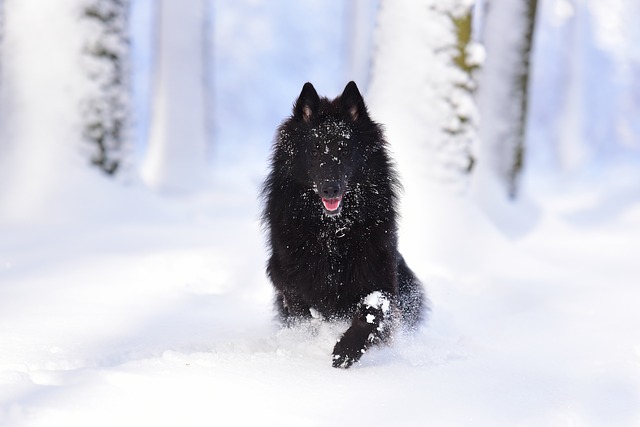
The Groenendael has Belgian Shepherd relatives but is itself a breed. It has gained recognition from official kennel clubs such as the Kennel Club of the United Kingdom. The American Kennel Club calls it the Belgian Sheepdog.
The Groenendael is a medium-sized, working dog. Like all sheepdogs, it is diligent. It stands out because of its glossy black coat..
It is among four dogs classified as Belgian Shepherds. The American Kennel Club identified all of them as a single breed, which raised some protest among Belgian Shepherd enthusiasts who felt that official kennel clubs should recognize the distinct features of each of them.
The other three Belgian Shepherds are the Teruven, Laekenois, and Malinois. All are renowned for their intelligence and agility.
2. The Origins of the Belgian Groenendael
The first records of the Groenendael appeared in the 19th century.
There were attempts to find shepherd dogs that represented the Belgian Sheepdog, and they turned up a medium-sized, square working dog.
The original Belgian sheepdogs differed in coat texture, colors, and length. Breeders named them after the towns and suburbs near Brussels.
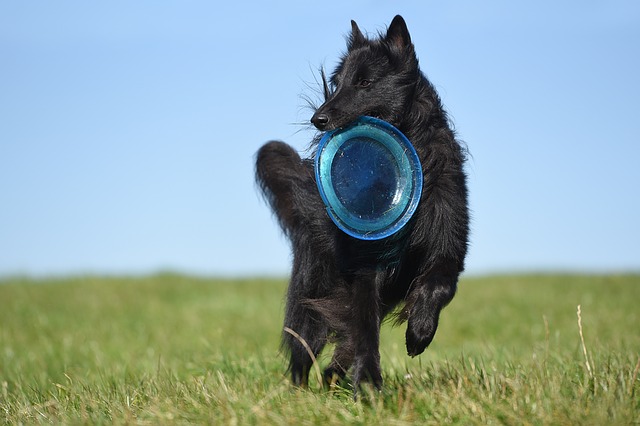
For example, wire-haired, fawn-colored Belgian Sheepdogs had to the name Laekenois because they came from the suburb of Laeken. Short-haired ones have the name Malinois because they originated from the city of Malines. Long-haired, fawn sheepdogs, were Tervuren because they came from the village of Tervuren. The black Groenendael came from the suburb of Groenendael, and its first breeder was Nicolas Rose.
Interest in the breed developed very quickly, and it was apparent that although initially a shepherd or sheepdog, the Belgian Sheepdog was a versatile animal. With its keen intelligence and easy trainability, it adapted exceptionally well to a variety of functions.
The first decade of the Twentieth Century found the Belgian Sheepdog working for the police forces throughout Belgium, Paris, New York City, and in Newark, New Jersey. It was also employed by European border patrols, serving as watchdogs.
Interest in the breed gained momentum. Whether it was a sheepdog or shepherd-type dog, the Groenendael was well-received by the Belgians. This dog distinguished itself as a war dog during World War 2. It was either a Red Cross Dog or defense dog.
The Groenendael is a top performer in obedience shows, and agility rings today.It assists people with disabilities. This dog is a versatile creature that still maintains the beauty that first gained it recognition in the 10th century.
The American Kennel Club continued to register all Belgian Sheepdogs as one breed until inter-variety breeding led to coat-colored issues. The AKC thus gave each type of Belgian Sheepdog, including the Groenendael, special status.
3. How does the Groenendael look?
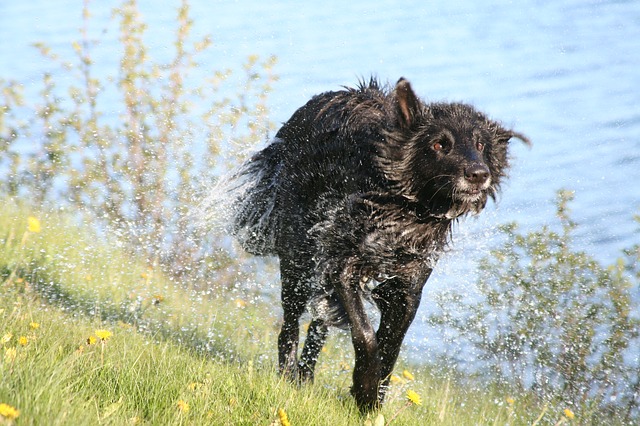
So, how does the Groenendael look? Here are details about its appearance, from its head to its bushy, black tail.
a. Coat: Texture, density, and Color
Similar to other cold-weather dogs, the Belgian Sheepdog has a coat that keeps it warm while it works.
Like other dogs bred for cold weather, the Groenendael has a double-coat. It is relatively dense, with a downy undercoat that protects it from the cold. This undercoat varies in thickness, depending on the Belgian Sheepdog’s environment. Coat color possibilities are black, fawn, or sable, with most being of the black variety. The hairs are relatively thick and adapt the Groenendael to Belgium’s cold climate. The ones on its head and front legs are shorter than the those on rest of its body.
What makes this fellow stand out? A collarette. It is the abundant amount of hair around its neck. Most male Groenendaels will have one.
b. Tail
This sheepdog(or shepherd) has a long, bushy tail that is either completely black or has white accents. These occur between its paw pads as well. Note that a dog’s coloring doesn’t affect its ability to work or be a loyal companion dog.
c. Eyes and Nose
The Groenendael’s eyes are brown, and it’s nose, black.
4. Choosing a Groenendael Puppy
A puppy will be your newest family member, and you will have it for its lifetime. It’s essential to choose one that suits your family’s lifestyle needs. Here are a few steps to selecting the right Groenendael puppy.
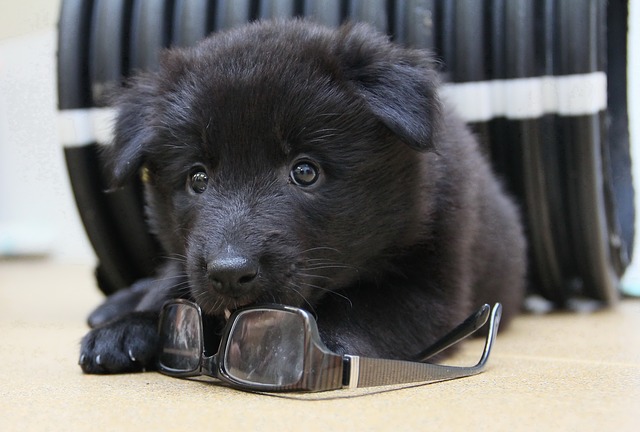
a. Consider cost
Of course, owning a dog involves costs. There are vet visits and grooming sessions to consider. Then; there is the food. Dog food can be more expensive than that for human beings. The financial responsibility causes many owners to abandon their pets. Preparing yourself for it is essential.
b. Consider temperament
The Groenendael isn’t an ideal dog for first-time owners. It is an extremely active working breed that needs lots of space. Consider if you have the time to take it for runs at dog parks or to socialize with other dogs. Prepare to spend time with it if you want one.
c. Visit Vets
Vets can advise you on health issues and puppy training. Find one that you trust.
d. Meet the puppies
Find a litter of Groenendaels that interests you and meet it. Handle the puppies; lift and cradle them. The more responsive they are to handling, the better.
Choose a puppy with a personality that suits you and your family members. Dominant puppies tend to be the first to scramble for their mother’s milk. Shy ones tend to be submissive. Then, there are those who are highly sociable. Which is a good fit for your family?
Also, avoid bottle-fed puppies. A breeder would have raised them this way because their mothers rejected them. Dams usually ignore weak puppies because they affect the strength of her litter. These dogs may have issues.
e. Meet the parents
Meet the puppies’ parents to find out if they have health or behavioral concerns. It’s essential to check them for behavioral oddities as well because their offspring will inherit them.
f. Health
Examine the puppy you’ve chosen for apparent signs of disease. Veterinary bills will add to your cost.
5. Grooming the Groenendael
Grooming is a task that many owners dread because it takes effort. Doing so for a double coated dog like the Groenendael is all the more challenging because of its long hairs and immense size.
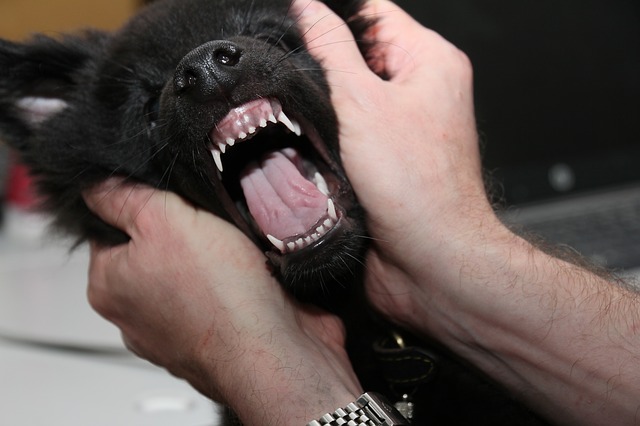
Your dog’s appearance, health, and hygiene show others how well you take care of it. Healthy dogs are happy ones and don’t transfer infections.
Proper grooming enables you to protect your pet from yeast infections and other skin irritation. It includes adequate brushing of the teeth and gums, necessary to prevent tooth decay. Trimming of the coat and nails is also essential as this prevents matting.
Caring for a dog’s hair is more critical than doing so for humans. Dogs have much more.
Taking care of a dog’s ears is vital as they have lots of hair in them. It prompts wax build-up, which, in turn, causes infections. Take your Groenendael to the veterinarian if they have a foul odor.
Then, there are nails. Many owners struggle with maintaining proper nail length. Cutting the nails too short can result in infections while leaving them uncut will cause your pet to scratch the floor. Giving them regular trims is essential. Not cutting them can lead to infections.
Having the proper equipment is a must; it enables you to do a thorough job of grooming your Groenendael. Here’s what you must have:
- • Dog shampoo
- • Dry towels
- • a blow dryer
- • Nail clippers
- • styptic powder
- • ear solution for dogs
- • clean cotton wads
- • hair clippers for dogs
- • a strong leash
- •A clean area
Prepare a clean area where you can groom your Groenendael. You should be able to clean it quickly. Dog groomers often wear overalls and masks to protect their clothes from hair and dander.
Calm your pet before you start. Your pet will enjoy the process and won’t resist your efforts. It won’t become agitated if you are kind and calm.
Step 1: Gather your tools
Collect your supplies and prepare the grooming area before bringing your pet to it. Ensure that you have all the tools mentioned above within a reachable distance so that you won’t have to scramble for them.
Step 2: Remove any mats or tangles
As you are calming your pet, look for areas with tangles. Apply a detangling solution to ease these areas. Note that they are hard to remove when wet, so you will want to make sure you do so before bathing your Groenendael. Use a matting rake if your dog has a lot of matted hair.
Step 3: Pre-bath trimming or clipping
Once you have cleared the tangles, start clipping the rest of the hair. Long-haired dogs like the Groenendael need more trimming around the chest, belly, hocks, and paw pads than other dogs. Use grooming shears or regular scissors. Be careful when clipping around the dog’s skin.
Step 4: Brushing / Combing
Give your pet a proper brushing before bathing it to prevent hair from collecting around your home. Since the Groenendael has long-hair, use a pin brush to comb its undercoat and a slicker brush for its outer coat. The Furminator is especially useful for removing dander and dirt.
Start at the dog’s head and work towards its tail. Ensure that you comb the entire coat. Be careful when using sharp tools.
Step 5: Bathing
You can never tell if a dog will like the bath; some dogs leap joyfully in, while others despise it. However, if you work to introduce your dog slowly to the water, offering some friendly rubs and verbal encouragement, it may learn to enjoy bath time.
You can tell if your Groenendael loves bathing; it will leap into the bath excitedly. If it doesn’t like the water, introduce it to the bathing process slowly. Give it friendly rubs and encouragement.
Base your decision on your routine. If you have a garden, you may want to wash it outside. Make sure that the water isn’t too cold or hot. The Groenendael is a large dog, so you may want to use a ramp.
Here are some points to note :
Use non-slip mats for apparent reasons.
Use the shower head instead of the faucet. It prevents the animal from getting too soaked.
Put cotton balls in the ears to absorb water.
Seek your veterinarian’s advice when getting shampoo for your pet. It may have skin problems and require the use of a particular brand.
Don’t use human shampoo to bathe your pet as it has a different pH level and is much harsher on their skin.
You should use your hands to turn the shampoo into a good lather.
After you have tuned the shampoo into a soapy mixture, massage your pet. Work from the dog’s head to its tail. Take the chance to touch its skin and feel for any physical problems. Rinse off the suds thoroughly.
Step 6: Drying
It’s time to dry the dog. Use a blow dryer with a variable setting.
Step 7: Ear Cleaning
Once you have finished drying your pet’s fur, make sure that its ears are free of wax- build up. Doing this prevents bacteria growth.
The canine ear has a unique structure. You mustn’t dig too far as you may damage the eardrum. The external ear canal is what usually becomes dirty. It has edges and folds that will gather debris. Unwanted discharge may cause irritation and infections.
The amount of secretion in the ears varies from one dog to another, and this is often genetic. Cocker spaniels and Bassets often secrete more wax as they have floppy ears. Cleaning reduces discharge, odors and the need to scratch.
To save time cleaning them, pour ear solution into the ears. Massage them gently to remove excess debris. Examine the ear flap and clean it with cotton wads if it’s dirty.
Step 8: Nail Trimming
You will need to trim your pet’s nails if they are long. They shouldn’t click on the floor. Long nails can become ingrown or cause infections.
Nail clippers are scary, especially if you are grooming your pet for the first time. It may become aggressive if it has had a bad experience.
For this reason, get your pet used to having its paws handled from puppyhood. Regular handling will ease its fears of nail clipping. If it is aggressive, you may need someone to hold it. A noose and muzzle may be handy as well.
Try cutting your pet’s nails from a small angle. Take small snips; don’t try to cut them all off at once. You may cut into the quick by mistake if you do, and there may be profuse bleeding. Your pet may never want you to clip its nails again.
Have a bottle of styptic powder on hand. If you do cut the quick by mistake, you can use it to put pressure on the wound. Remove the clot after the bleeding has subsided.
Not trimming the nails can cause the quick to grow long, increasing chances of bleeding when you finally do cut them. Cut them when the dog is wet as they will be softer then. Consider using a nail grinder.
Walk your dog on cement if you want to keep the nails short. It trims the nails down naturally.
Step 9: Brushing teeth
A Groenendael has to have healthy teeth. After all, it chews, plays with toys, and retrieves objects regularly.
Like human teeth, a dog’s teeth decay over time. Use dog toothpaste as canines are allergic to fluoride.
You will need to practice brushing its teeth regularly so that you will be comfortable with the process. Once you are, the dog will be too.
DIY grooming presents the chance for you to bond with your pet. Use these tips to keep it healthy and look its best.
6. What’s good and bad about the Groenendael
The Groenendael, or Belgian Sheepdog, is an intelligent dog but one that’s a challenge to own. This dog is agile, graceful, elegant, and always on the move. It practically dances in light-footed circles, and it can be a task to keep up with it. What does this mean? It needs to exercise.
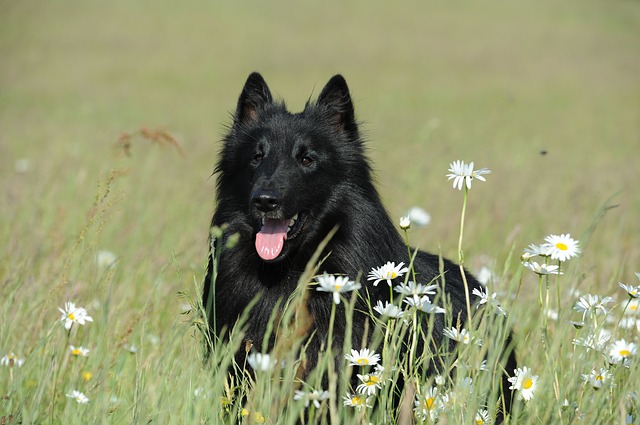
The Groenendael doesn’t only need physical activity; it also requires mental stimulation. Advanced obedience, agility, herding, or tracking sports will keep its active mind occupied. The Groenendael needs supervision and structured activities.
This fellow has a sense of humor and often plays the mischievous clown, although it takes its role as Shepherd seriously. It is wary of strangers and can be a little aloof. Socialisation will ensure that it’s watchfulness doesn’t turn into suspiciousness. Be aware that this breed tends to be jumpy when surprised; don’t attempt to come up behind it.
This dog gets along well with other pets if you raise them together. Note That many of them have a high prey drive, making dog-to-dog aggression quite common. Do supervise it when it’s around animals.
The Groenendael is exceptionally responsive to its owner’s instructions, mainly if he or she is confident. Remember, however, that it is difficult for an inexperienced owner to train. Be the dog’s alpha because it can be quite dominant.
Each of the four Belgian Shepherd varieties has a different temperament. Of course, every dog has unique traits.
The Belgian Malinois or the short-haired Belgian shepherd excels in protection sports like Schutzhund. Police forces often use them as protection dogs. Motivated, and with a high prey drive, they do not make loyal family pets.
Laekenois are reliable protection dogs as well and need patient, confident owners as they tend to be dominant. Teruvens excel in obedience training and agility sports. These dogs may be either high-energy or nervous.
And then, there is the Groenendael. This fellow has a strong drive to work, so give it tasks around the house. It also has dominant tendencies and needs a confident, experienced owner. It excels in dog competitions.
This dog is right for you if you need a competent canine assistant. Very intelligent and versatile, you can teach it to do almost anything.
Don’t welcome this fellow home if you cannot deal with a dog which has a high activity level. If you have no time to fulfill its vigorous exercise requirements, it’s probably not right for you. Remember that it may have some aggression towards people and animals it’s not familiar with, so don’t adopt it if you have no time to socialize it.
Also, note that the Groenendael has a mind of its own; it is stubborn and does as it pleases. Only welcome it home if you are prepared to show it who’s boss.
Furthermore, this dog loves to chase moving objects. Please read the section on how to manage annoying behaviors like chasing.
Remember that training shapes a dog’s temperament as much as heritage. You can still manage your Groenendael if you train it well. Avoid negative traits by choosing an adult dog. If you love puppies, make sure to ask your breeder about inherited behavioral problems.
7. House Training A Groenendael
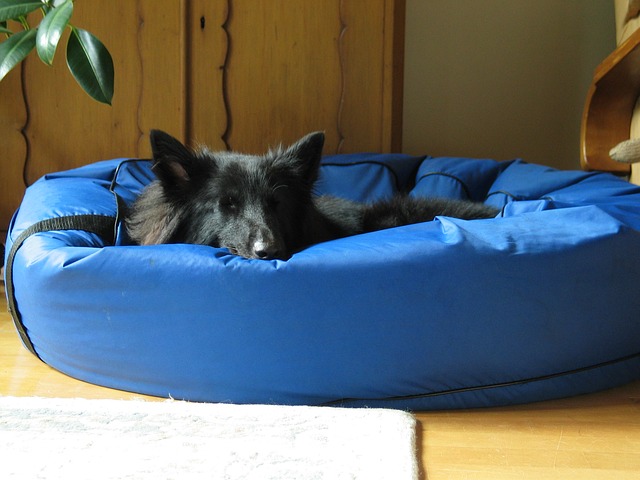
House training can be a stressful experience for hapless dog owners. Here’s how to make it a less fretful one.
a. The Basics
i. Routines
First of all, establish routines for your Groenendael puppy. Remember that this dog is particularly active, so it needs early training and socialization. Once they are in place, your puppy will learn to ‘go potty’ quickly.
Puppies usually ease themselves when they get up after they eat and before they go to bed. Bring it to its potty areas, whether inside or outside, during these times.
ii. Crate training
Crate training can be restrictive and off-putting for dog owners. However, such a tool is necessary for trips to the vet or for confining your dog in dangerous situations.
To get your pet to use it, leave a treat in it. Doing this gets your pet to associate it with safety. Your Groenendael will go in of its own accord. Remember to leave the door to it open; your pet shouldn’t feel that it’s a prison.
iii. Paper Training
Select a potty area for your pet. Lay it with newspapers and bring your puppy there when you want it to eliminate. Once it becomes used to the place, remove some of the paper and make it smaller. Your pet will understand that the restricted area is its toilet.
iv. Outdoor Training
When bringing your pet outdoors, take it to the areas it has used before. The scent will tell your pet then it should ease itself there.
v. Bells
Bells serve as a reminder that it is time to ‘go potty.’ Hang one in front of the door of your pet’s cage and another in front of the dog door, if you have one. Bring your pup to them and get it to ring them when it’s time to ease itself. You will find it doing so on its own soon enough.
vi. How would you know that your puppy needs to go?
Your Groenendael will give apparent signs that it needs to ease itself. It will start walking in circles or become anxious.
b. House training Dos and Don’ts
Dos
Positive reinforcement is the key to successful house training. Reward your pet each time it relieves itself in an approved area.
The best way to train a puppy is to use a mix of all useful training methods.
Do remember that your puppy has an efficient digestive tract. It usually relieves itself 30 minutes after it eats, so take it out during those times.
Your energy plays a large part in your housebreaking efforts. Speak to your puppy in bright tones.
Don’ts
Never hit your pet if it doesn’t relieve itself in the correct areas. Doing so only causes it to fear you. It won’t teach your pet to ease itself in the right places.
Do use enzymatic cleaners if your pet gets into an accident. It will eradicate the scent.
c. House training adult Groenendael Dogs
Is your Groenendael an adult rescue dog? Dogs which come from shelters have not received proper house training. You will need to train it as if it is a puppy, and use the methods above.
8. Quirky Groenendael habits and how to manage them
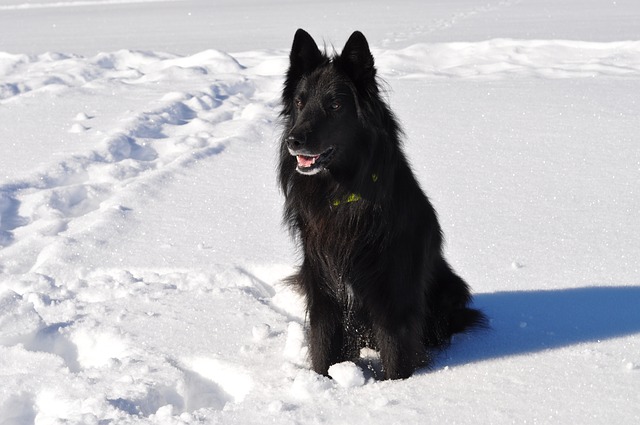
A Groenendael is active and not easy to manage. It may have annoying quirks that you may have to deal with at some point.
a. Howling
This trait is evolutionary and is what makes a dog. Your Groenendael may do it to mark its territory, and emphasize its presence.
If your pet has a howling or barking obsession, teach it to respond to the command ‘no speak.’ Close its muzzle gently, and your pet will soon stop its noise.
b. Tail Chasing
Dogs sometimes see their tails as toys. Tail-chasing is usually a passing phase and doesn’t require intervention.
c. Barking at reflections
Another odd canine habit is barking at reflections -theirs. Dogs often mistake themselves as other dogs.
The good news is that they tend to ignore them as they age. You can let this behavior go because it’s perfectly harmless. However, teach your pet to respond to the ‘no speak’ command if it becomes bothersome.
d. Walking in circles before lying down
Circling is a dog’s way of giving itself a little comfort. This behavior is an offshoot of its wild dog ancestry. Undomesticated dogs don’t have creature comforts, so they make the most of tall grass.
Don’t worry if your pet behaves this way, as it is only a signal to other animals that it has claimed the spot as its territory.
e. Sitting on your feet
Does your pet sit on your feet? It’s trying to claim you as a member of its pack. Some pet owners may say that this is dominance, but it’s affection-seeking behavior.
f. Butt-scratching
If your Groenendael scratches its rear all the time, you probably need to bring it to the vet. It could have a skin infection.
g. Staring
Does your Groenendael look at you with puppy-dog eyes? This expression is what it is; a sign that your pet loves you. Of course, it could also be a signal that it wants a treat from you too.
h. Chewing
Your Groenendael may be fonder of your slippers than you. And there’s usually nothing left of them after it expresses its love for them. To prevent chewing, substitute them with a safe chew toy.
i. Chasing objects
You may find yourself trying to prevent your pet from running onto the road and going after moving cars or bicycles. Chasing is a behavior that you must rein in because of its apparent dangers.
To do so, leash your pet during peak traffic periods. Teach it the commands ‘sit,’ ‘come,’ and ‘stay.’ Getting your pet to respond to them will prove an effective way of keeping it safe. Keep your pet leashed whenever it’s outdoors.
j. Digging
So, you have a pet that loves to uproot your garden. What on earth do you do?
Seclude your treasure-hunting Groenendael in an area of your yard where you won’t mind a mess. Give it a sandbox where it can dig to its heart’s content.
k. Begging
Does your pet give you a doe-eyed look when it sees its favorite food on your table? Ignore it.
No matter how hard it tries to convince you to cave in, don’t. Even saying ‘no’ tells it that it may eventually get what it wants.
l. Gulping
Your pet may eat a little too fast. Ît probably does this because it tried to keep its littermates from getting its mother’s milk when it was a puppy.
To stop this behavior, use bowls designed to keep dogs from swallowing food quickly. These have high, narrow openings, so your dog can only eat a little at a time.
m. Separation Anxiety
Does your pet look listless when you leave home? You need to deal with separation anxiety.
Leave your home for short periods at a time. If your schedule doesn’t permit this, get someone who can to stay at home with your pet. Play soft music when you leave, as this assures yôur dog that you are returning. Say goodbye, but don’t make a fuss.
n. Aggression
A Groenendael is prone to aggression to smaller pets, so keep it away from them. Also, stay away from potential conflicts with other dogs. Groenendaels are watchful, and a little suspicious, owing to their role as watchdogs on farms. The key to stopping aggression is early socialization.
9. Feeding your Groenendael
The best food for one dog may not be best for another, and this is sound logic. You should cœnsider your Groenendael’s age, weight, and lifestyle needs. Then, you need to worry about buying wet or dry food. These pointers will lead you to the dog food that’s best for you.
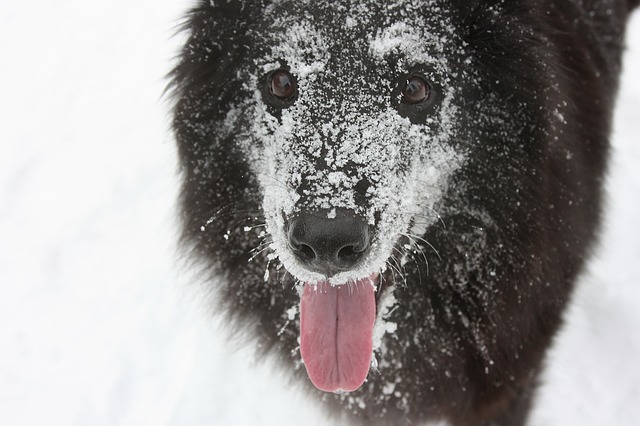
a. Nutrients
When finding a food match for your pet, you need to consider the critical nutrients that it needs. Does it have health issues? Is it elderly? It may require a specific dog food to stay healthy. Seek a veterinarian’s advice.
Every dog food should contain proteins, carbs, fiber, fats, minerals, and vitamins. It should comprise of quality ingredients and balance the nutrients the dog needs within them.
These are the ingredients your Groenendael needs:
Protein will help your pet build muscle, bones, and skin. They support the body’s internal structure and organs. You will find them in soy, salmon, eggs, and chicken.
Carbohydrates provide your dog energy throughout the day. Carbs are in barley, corn, rice, and sorghum. They also give your dog energy. Healthy carbs to give your pet are barley, rice, or corn.
Your pet will need fat for energy and healthy skin. Give your dog healthy fats, like the ones in vegetable oils.
Your pet will need fiber to keep its digestive system functioning. You can find this in beet, soybean milk, and cellulose.
You will find the vitamins your dog needs in the ingredients listed above. Eggs provide Vitamins A and E, while brown rice has potassium. Liver and beef have iron. These nutrients will ensure that its immune system works efficiently.
Your dog will need minerals, and like vitamins, you will find them in the foods above. Magnesium supports its teeth and bones, while sodium, in optimal amounts, promotes heart function.
b. Age
Your dog will need different vitamins and minerals to remain in the pink of health throughout its life. Puppies, for instance, need Vitamin B12 for growth. They also need calcium and phosphorus. Choose a dog food with an appropriate balance of these vitamins.
c. Conditional Carbs
Once you ascertain the nutrients your pet needs, decide on the dog food that best suits its lifestyle. Does it have health issues? Is it overweight? Consider these factors and ask your veterinarian for recommendations.
d. Affordability and Source
Next, think about where you want to get your dog food. Do you want to buy it from your veterinarian, at a pet store, or over the internet?
You can purchase most dog food in any of these three ways. Find out more about the food that you are interested in from the manufacturer’s website. Manufacturers should list which retailers sell their food. Their sites should have features that allow you to find food that suits your Groenendael’s health and lifestyle needs.
Once you find the right food, search for available promotions. These will reduce costs; after all, dog food is expensive. Many pet food companies offer coupons that you can obtain over social media.
Continue to monitor your dog’s health and activity level, as your dog’s nutritional needs can change over time.
For this compelling reason, it is essential that you structure its diet. Consult your vet for options that will help your pet transit two new types of food at different stages of its life. Remember that the food you choose should not disrupt its digestive system.
e. The 95 Percent Rule
You should note that there are ingredients to avoid as well. They are as critical as the ones you should include in your pet’s diet. Although government regulators issue guidelines for manufacturers to follow, they may not do so to the letter.
Read the nutritional adequacy statements on food packages. These should indicate if the food is suitable for a dog that’s an adult, senior, or pregnant. Some foods may only be ideal for supplemental feeding. Snacks and treats aren’t nutritious.
Meat products should comprise 95% meat for them to have that name. They should not contain artificial colors or flavors.
f. Wet vs. Dry
You may be confused about whether wet or dry food is better for your pet. Both wet and dry products can suffice your pets nutritional needs, so choosing what to feed your Groenendael is a matter of preference.
Is your pet elderly and struggling to chew? Wet food is probably appropriate for it. If your pet has a specific health concern, your veterinarian can suggest suitable products. Choose the food to which your pet responds best.
g. Putting It All Together
In all, choosing the best dog food means finding a brand that uses quality ingredients. It should offer an appropriate balance of proteins, fats, carbohydrates, fiber, and vitamins.
10. Breeding Groenendael Dogs
Do you have a passion for Groenendael dogs? Perhaps you would like to breed a litter. Here is what you must do to produce Belgian Sheepdogs successfully.
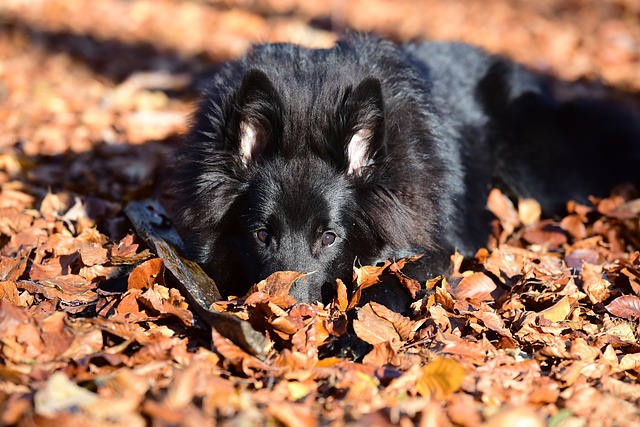
If you want professional help:
a. Choose a responsible breeder
First of all, find a suitable breeder to help you if you are not doing the work yourself.
Responsible breeders produce puppies in hygienic conditions. They do so in spacious areas. They would have whelping supplies ready as well.
Dependable breeders let their clients meet the puppies and give them the opportunity to find out is the dogs have medical and behavioral issues. They would allow potential owners to meet the parents for the same reason. These breeders would have the dogs examined by a veterinarian and have them vaccinated.
Responsible breeders would be more concerned about the welfare of the puppies than selling them. Their priority should be to find suitable homes for the animals. As such, they would not allow you to take the dog home unless you prove yourself ready.
If you are breeding puppies yourself:
b. Decide if breeding a dog is right for you
Do extensive research. You should have spent at least two years as a dog owner or trained dogs for obedience competitions.
Also, ask yourself why you want to breed dogs. Many people breed dogs to sell, and that’s alright. But you must ensure that all the Groenendael puppies that you’ve bred go to stable homes. Decide if you’re prepared to invest the effort and time needed to look after these new, furry charges.
Furthermore, prepare to live with the puppies for about eight weeks, as that is how long they should stay with their mother. They can only move to new homes after you have weaned them.
c. Find out if your dogs are fit to breed.
You should have an exceptional example of a stud and dam. The dogs shouldn’t have behavioral or health issues. Look into their genetic backgrounds. Meet them and observe their temperaments, as their puppies will inherit their quirks.
Also, check the dogs’ ages. Ideally, dogs should be about two years old to be suitable for breeding.`
d. Have a vet examine the dogs.
Have your vet check the dogs for health concerns. He should be up to date on vaccinations as well. Familiarize yourself with its medical history; find out if it has any allergies.
Furthermore, your vet should give the female a progesterone test to determine if she is ready to breed. It reveals if she is ovulating and is in her estrus cycle when she is sexually receptive.
e. Wait for the female to go in heat
She won’t accept the stud otherwise, and may even become aggressive. Females are typically receptive of males about 9-11 days into a heat cycle.
Note changes in your dam as well. It will gain weight and need extra nutrition, especially during the last stages of its pregnancy. Proper nutrition will allow it to lactate.
f. Keep the dog healthy
You will need to feed the dam a balanced diet. Give it supplements such as vitamins and calcium. Clean the kennel regularly and keep the dogs’ surroundings free of fleas and other pests.
g. Whelping
Have whelping supplies ready. They include a whelping box, big enough to house the mother and her pups. You should have lots of clean towels on hand and fresh water.
Lay the box with plastic sheets and newspaper. You will be able to clean it quickly should it get soiled.
h. Delivery
Be alert for your dam’s contractions. Have your veterinarian do X-rays of her about 45 days into her pregnancy. He will be able to detect fetal skeletons and let you know how many puppies to expect.
i. Caring for the puppies
Make sure that you start advertising that you have puppies at about this time (45 days into your dog’s pregnancy). Find your little Groenendaels loving homes. Your vet should check the puppies for defects, and give them a required series of vaccinations.
Monitor the pups, which should gain about 10% of their body weight after the first two or three weeks. Put them in an enclosure and let them explore.
j. Screen potential owners
Make sure that the people who’ve expressed interest in owning the pups can take care of them. Though this is hard to do, turn down families if the puppies don’t fit into their lifestyles or circumstances.
Create a contract with them. State that owners must return the pup to you should they not be able to care for them.
11. Looking after the health of your Groenendael
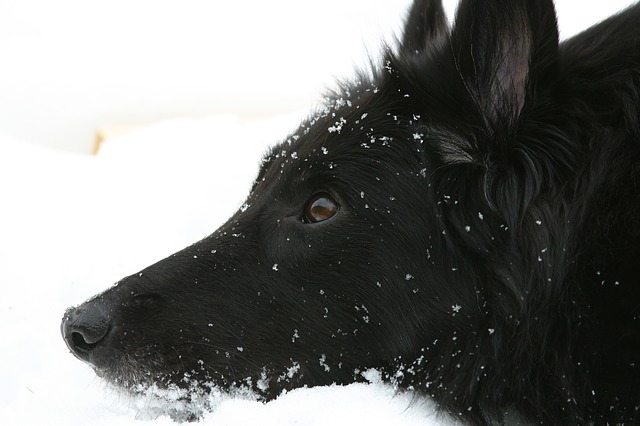
Groenendaels are generally physically fit but are prone to health issues like the ones detailed below.
a. Epilepsy
Canine epilepsy, or dog seizures, can trouble Belgian Sheepdogs. Issues with the dog’s blood or organs may trigger them.
Some dogs may experience partial seizures, which occur in specific parts of the body and affect only parts of their brains. Others may have Grand Mal seizures which affect the entire body.
A dog may appear dazed or confused before a seizure. Seizures often happen when dogs are asleep. It may also have difficulty controlling urination.
Vets may recommend surgery to treat organs that may cause the seizures. Take your dog to the vet for regular evaluation.
b. Dysplasia
Hip and elbow dysplasia can cause lameness. It refers to the malformation of hip or elbow sockets and is affected by the dog’s environment. It is a common ailment in larger dog breeds like the Groenendael.
Bones may not fit well into sockets, and this causes pain. The animal may limp, or ‘bunny hop’ to ease the strain. Neutering a dog before it reaches full maturity may trigger the condition.
c. Lymphosarcoma
Lymphosarcoma is the third most common cancer in dogs. It occurs when rogue cells in the lymph nodes metastasize.
It may occur in the external lymph nodes, gastrointestinal tract, or skin. The dog will find it difficult to breathe and experience weight loss.
Vets may recommend chemotherapy. Dogs usually survive for about a year after diagnosis.
d. Thyroid disease
The thyroid produces thyroxine, along with other hormones that regulate a dog’s body functions, particularly its metabolism.
Your Groenendael may have Hypothyroidism, a condition which refers to a lack of hormones. It may become fatigued or gain weight. Its skin may thicken as well. Also, it may experience reproductive disturbances. Your vet will probably give your pet replacement hormones.
e. Heart disease
Dogs do get heart disease, but a high-fat diet may not cause it. Heartworms are often responsible for the condition. A dog may experience Myocardial disease as well.
Watch out for irregular heart rhythms or fatigue. Raised blood pressure is another sign of heart ailments.
Unfortunately, heart disease in dogs isn’t entirely preventable. A vet may recommend medication or surgery to insert a pacemaker. He will put the dog on a low-salt diet to decrease the fluids in the body.
12. Obedience training for your Groenendael
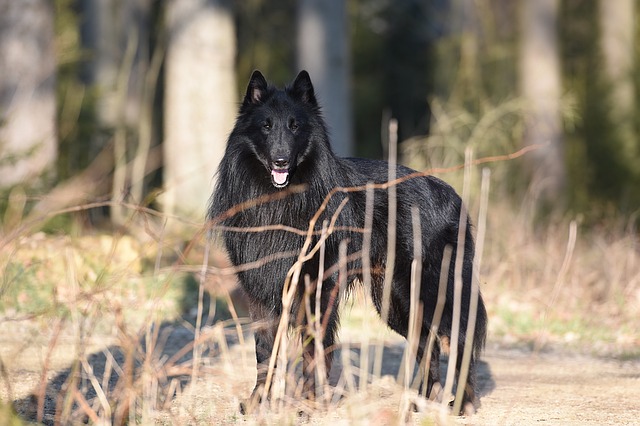
Some owners believe that obedience training is a trivial matter, but they couldn’t be further from the truth. A trained dog is a secure and pleasant one. Furthermore, obeying simple commands keeps a dog safe.
a. Sit
This command is the first that all dogs should know. It will keep your Groenendael in place and out of trouble.
Hold a treat in front of your pet’s nose. Then, slowly lift it above its head. Your dog’s eyes will follow the goodie, and its bottom will lower. If it gets back up, push it gently into a sitting position. Give the command ‘sit’ and praise it generously when it’s in this posture. Give it the treat.
b. Stay
This command is another useful one for dogs to learn as it keeps them in place when necessary.
Your Groenendael must first know how to sit. Get the dog into a sitting position, then lift your palm. Say ‘stay,’ and walk back a few paces. Reward your pet if it doesn’t follow you.
c. Come
You will need to use this command should your Groenendael wander into oncoming traffic.
Leash your pet. Tug on the leash and bring the dog to you slowly, saying the word ‘come’ as you do. Give it a treat when it arrives.
d. Down
Getting your Groenendael to lie down can be a challenge because this posture is submissive. Groenendaels have minds of their own.
To teach this command, kneel and put your left hand on your dog’s shoulder. Put your hand just behind its front legs and say ‘down.’ Press on its shoulders lightly, and push its legs out in front of it. Reward it when it’s in this position.
e. Heel
Having to pull on a stubborn dog’s leash is exhausting and painful for both you and it. The ‘heel’ command will help to make your walk enjoyable.
Have your dog stand next to you. Hold your leash in your left hand, and a squeaky toy in your right. Place the toy such that it’s a little in front of your dog’s head.
Have it look at the toy as you say ‘heel.’ It will step forward with you as it follows the toy. Once it walks together with you, reward it.
f. Leave It
You don’t want your pet to grab items randomly. Teach it how to ‘leave it.’
Begin by leashing your pet. You should already have taught it to sit and stay. Get your pet into a sit-stay position and fold the leash neatly in your left hand.
Hold it without any tension, but make sure that it isn’t so slack that it reaches the floor. Toss a food treat in front of your Groenendael. Then say ‘leave it.’
Your dog will go out to get the treat. If it does, don’t reprimand it, but gently get it back into the sit-stay position.
Then, try to teach the command again. Watch your pet’s reaction. It may stare at the treat or look at you. These are natural behaviors. What you don’t want is your dog to grab the goodie.
If your pet doesn’t reach for the treat after about five seconds, reward it. Repeat this exercise until your pet is familiar with the command.
13. Suitable activities for Groenendael
The Groenendael is a hard worker and does best when it’s occupied. It will take its frustrations out on your shoes if it has nothing to do. Here are a few activities which will keep it focused.
a. Search and Rescue
Your dog will learn to find a lost person. One trained, it will be able to find people trapped in forests or if you live in a snowy climate, avalanches.
One boon of this activity is that you and your Groenendael can do it together. Take the opportunity to not only make a difference in your community but also spend quality time with your precious pet. Find and attend the Search and Rescue sessions that may be available in your area.
b. Food Puzzle Toys
Put treats in a container. Pick one made of plastic and hard rubber. It should have holes at the sides so that the food will roll out of it. Your pet will have fun trying to retrieve the goodies. Trying to get food out of the container will be its job. Dogs draw to these toys because they are scavengers by nature. They will try to maneuver the toy in many ways, and get rewards for their efforts.
c. Bikejoring
While this activity sounds like hard work, it is enjoyable. It involves tethering your dog to your bike and getting it to follow you as you ride.
Running is the perfect job for a Belgian Sheepdog, which breeders developed to go after livestock. You can spend time together with your pet while boosting its well-being.
d. Agility
You can create a mini obstacle course in your yard if you don’t have the time to bring your dog to one. Use hoops, chairs, bars, brooms – anything you can grab. Introduce your pet to kiddie tunnels and watch it have fun trying to maneuver its way out of them.
e. Hide and Seek
This activity is ever-popular because of its simplicity. Hide treats all over the room, while someone holds your pet in another. When you are ready, ask it to ‘find.’ Have fun watching your Groenendael gobble the goodies it comes across.
In conclusion, the Groenendael is a sleek, handsome sheepdog that needs quite a bit of attention. Make sure that you choose a well-bred dog. The Groenendael will make an excellent companion if you take care of its training, health, nutrition, and activity needs